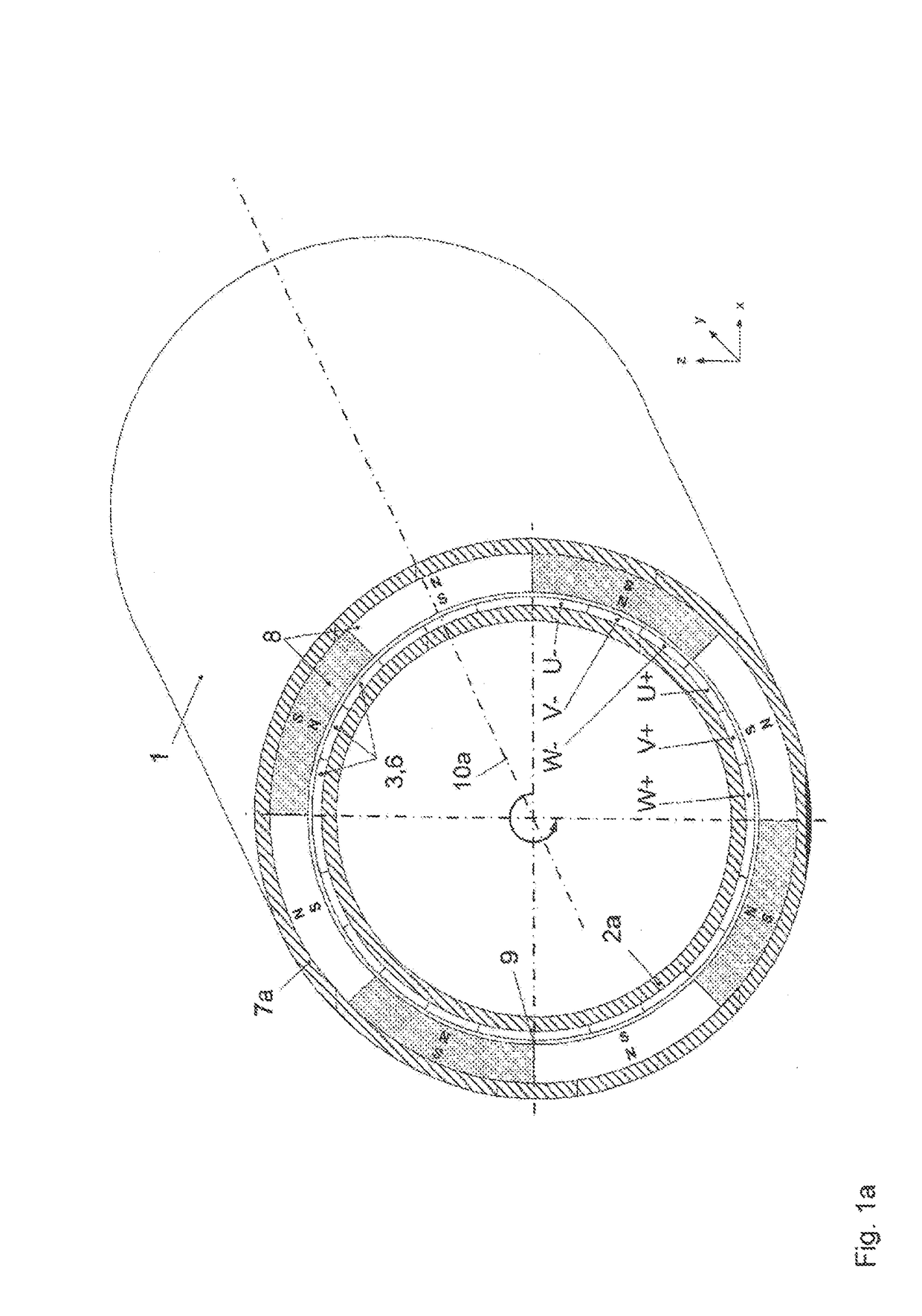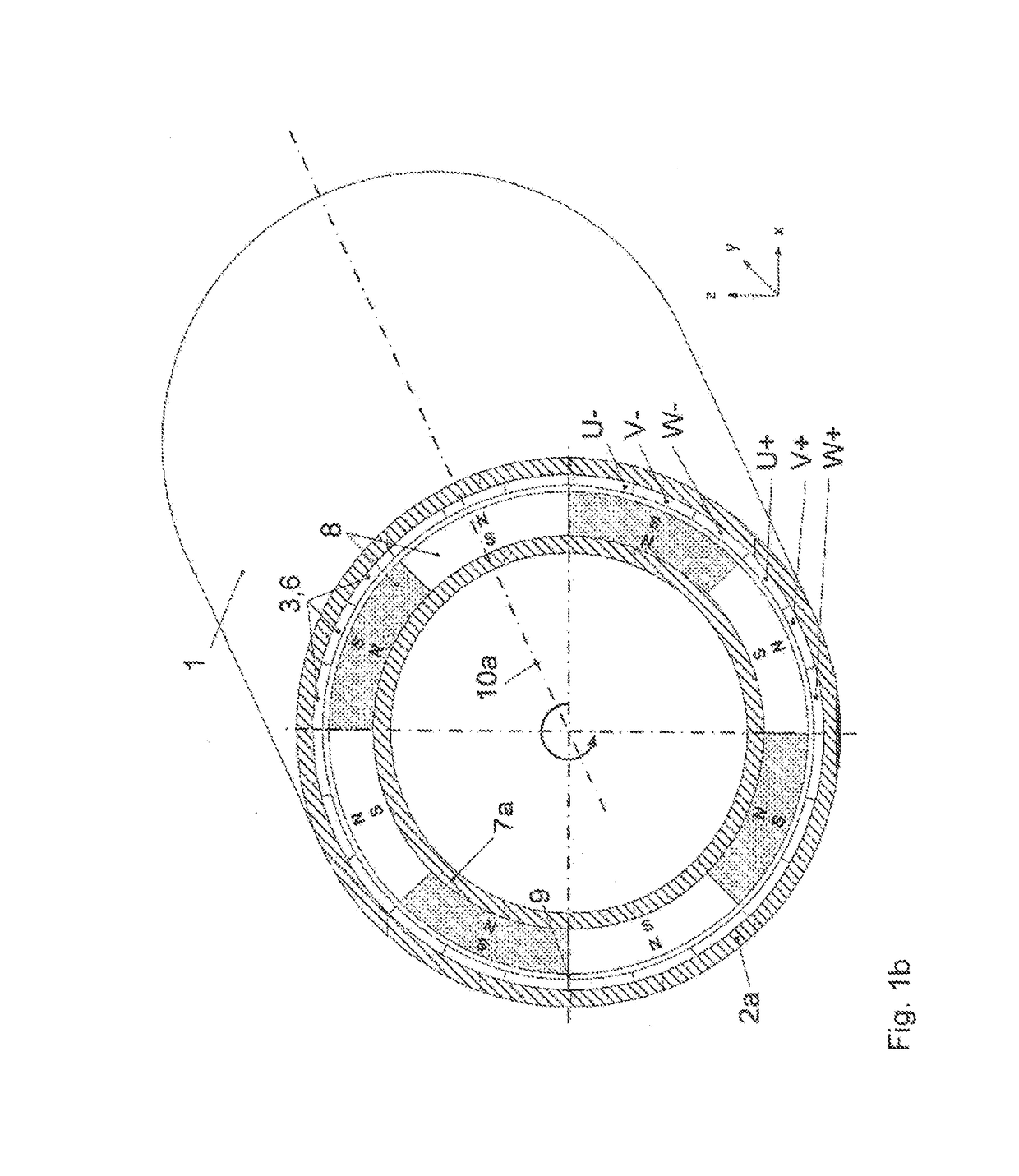Electric motor having an iron-free winding
a technology of electric motors and windings, which is applied in the direction of windings, magnetic circuit rotating parts, magnetic circuit shapes/forms/construction, etc., can solve the problems of increased ohmic losses, eddy current losses, and relatively high manufacturing costs of laminated stators, etc., to achieve low cost, small winding material, and low electric resistance of electric motors according to the invention
- Summary
- Abstract
- Description
- Claims
- Application Information
AI Technical Summary
Benefits of technology
Problems solved by technology
Method used
Image
Examples
Embodiment Construction
[0075]FIG. 1a shows schematically the structure of an electric motor 1 with an external rotor, i.e. the primary part 2a and the winding arrangement 3 are located inside the secondary part 7a with the magnetic poles 8. The winding arrangement 3 is here composed of three phases 6, designated with the letters “U”, “V” and “W”, wherein a phase is composed of several phase windings 4 and electrical connection elements 5 which, although not illustrated in FIG. 1a, are visible in FIG. 2, wherein at least one phase winding 4 of a phase 6 is located underneath a magnetic pole 8 in the air gap 9, in particular in such a way that the phase windings 4 are oriented parallel to the rotation axis 10a, which implies that all magnetic poles 8 are used at all times for torque formation. The magnetic poles 8 are polarized radially in relation to the rotation axis 10a, with the polarization alternatingly changing between the adjacent magnetic poles 8. The primary part 2a and the secondary part 7a are s...
PUM
 Login to View More
Login to View More Abstract
Description
Claims
Application Information
 Login to View More
Login to View More - R&D
- Intellectual Property
- Life Sciences
- Materials
- Tech Scout
- Unparalleled Data Quality
- Higher Quality Content
- 60% Fewer Hallucinations
Browse by: Latest US Patents, China's latest patents, Technical Efficacy Thesaurus, Application Domain, Technology Topic, Popular Technical Reports.
© 2025 PatSnap. All rights reserved.Legal|Privacy policy|Modern Slavery Act Transparency Statement|Sitemap|About US| Contact US: help@patsnap.com



